Looking Forward and Past in London
Visual Ethnography Project – Looking Forward and Past in London – Phil Smart
There is tension in corporate religious life. Although some would like to live their Christianity in solitude or apart from a traditional community of believers, the reality is that most will, and need, to be associated with a structured element of belief – the church.
The church has always dealt with differing viewpoints and tensions between extremes of belief and expression. The London experience for me visually illustrated this tension between extremes, between old and new, between tradition and progress. As my thesis deals with the volatile subject of homosexuality and the Bible, London was the perfect backdrop to elucidate this tension, and the reality that with small compromises and modified worldviews, people of all persuasions can move forward, exhibiting a positive approach.
Sarah Pink in Doing Sensory Ethnography reminds us that sensory experience I’ve experienced in London such as old and new, tradition and modern “can easily be associated with media for communication. (p. 60).” That’s the goal of this project.
LeAnn and I took the train to Cambridge. She is more hesitant about progress and change. She wants to make sure that where we’re going makes sense. She sits in the chair facing backwards, more comfortable with looking back while moving forward slowly. I sit in the seat looking forward. What’s happened in the past, although important, isn’t near as significant to me as to what the future holds. I want to see the trends and new developments that surround our expression of faith.
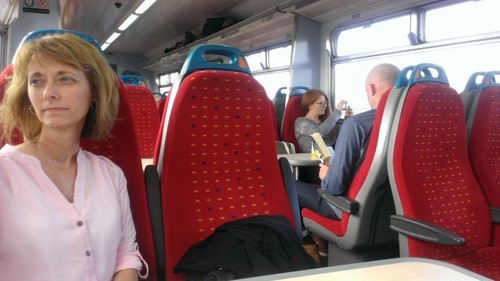
Most take radical sides when discussing homosexuality and the Bible. A quick movement to either side is normally the posture. However, in my thesis the examination of a middle ground called the “muddled middle” will be considered. Is it possible to coexist with different ideas and beliefs? To coexist in a way that glorifies God and seeks to help others live the way God intends, even when we personally might not believe that is the best for their life?
Can they coexist? Can we go forward while looking backward?
I sensed this during our trip to Lloyds of London. Although completely immersed in the current, with all the technology and architecture of the future, retention of the trappings of old was also present. The way in which business was conducted was of another era. The manner interaction took place was unlike any other business today, but yet these two incongruences coexisted and a healthy, purposeful company is the result.

Leaving Lloyds I saw this attitude continued as the adjacent market was in fact, a modern work built to look and feel like something from the past. Businessmen and women in expensive suits stood and drank their pints on oak barrels in the walkway, replicating another time – but the prices were definitely a reflection of today!
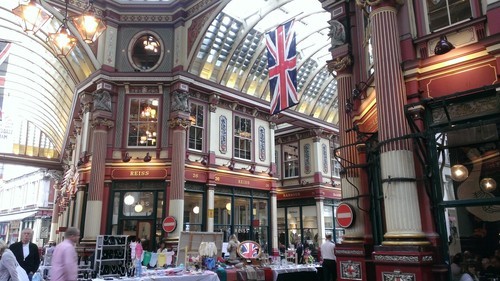
Another aspect that the church needs to deal with to remain relevant is adaptation. Some feel this word is anti-biblical, but adaptation can many times mean good things. I hope that the church is pleased with its adaptation to seeing the Bible differently regarding slaves, bi-racial marriages and women in ministry. I am proud that adaptation to changing realities has allowed the bride of Christ to be multi-ethnic and not afraid of science or the development of the church in the South.
Can they adapt?
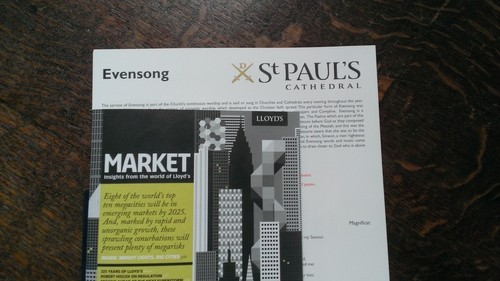
Throughout London I sensed that adaptation is still a struggle. Jeremy Crossly at St. Margaret is embracing adaptation, learning that to minister; change needs to happen, while Fr. Nick Mercer and St. Paul’s reflected the position of tradition and the need for the parishioner to make the changes necessary to relate to an unchangeable God. Both have their place and these sides will continue to seek the perfect expression of adaptation or station. Is it a cathedral or an intimate Alpha gathering?
Can the decline of the Anglican Church – or the old – be associated in any way to Hirshman’s models of exit in Exit, Voice, and Loyalty? My adviser, Krish Kandiah, shared that St. Paul’s was inactive when voices petitioned the church to allow the 1% protestors shelter and dialogue. Suppose people took noted and “voted with their feet in exit or with boycott (p. 86)?


As LeAnn and I toured London on our own, Southwark Cathedral seemed to be an exception. The church expressed a side of tradition and modernity, with the ability to touch its community with new as well as old architecture and expressions of ministry.
London is the perfect canvas for painting this picture of tension, old and new, adaptation and station. An architectural boom is present. Cranes fill the sky with some of the most innovative structures found on earth – while century old monuments sit in their shadows. Traditional ways of posting a letter sit next to recycle depositories and traditional bike racks compete for space alongside an innovative rental system. One night was celebrated in the Lamb and Flag, oldest pub in London, while the night before, many enjoyed the modern, “hip” Albannach restaurant.


In all of the confusion and rhetoric surrounding my thesis topic, it can’t be ignored. Change is coming. What we as the church decide will likely factor into the relevance of the Christian community for years to come.
Whether we can adapt or coexist, it’s coming.
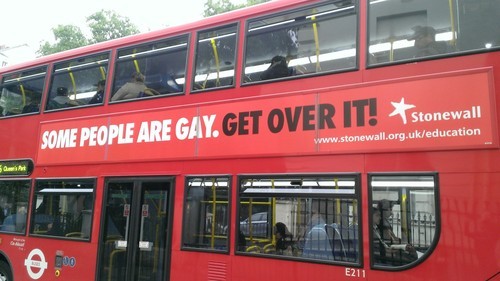
As I continue to examine the different views and attitudes toward gays and the church, perspective is key. How does our worldview interject and alter our vision of this issue. Can worldviews be modified to include a more Christ-like compassion in the midst of disagreement? Can perspectives be changed through cultural intelligence? These are questions that I hope to research and test. Steve Chalke’s perspective has changed. He has transitioned to a worldview of an inclusive approach to the LGBT community. Can or should others?
While enjoying the London Eye, one of the newest most innovative attractions in London – this city of contrasts – I noticed an old man. I was looking at him from a glass bubble in this monument of modernity and change, a symbol of relevance for the capital of Britain. And yet, his perspective seemed quite different. He could have represented the side of tradition and immutability. I imagined that he comes out on his porch every evening and reads the paper or just relaxes. In my imagination he has been doing this for years, even before the Eye was built. He has no interest in the Eye or modernity but is content with what has been and continues to live life without change – in the shadow of adaptation, modernity and revolution.
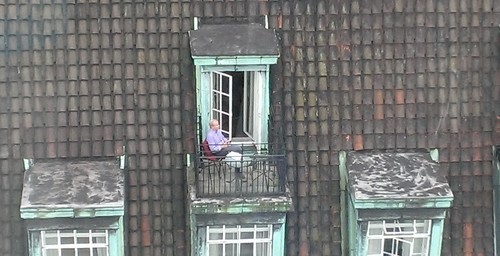
It’s all about perspective, tension and adaptability. As the church seeks relevancy for the future, I surmise that we need to be less like the man on the balcony and more like Jeremy Crossly or Steve Chalke.
As this is a visual ethnography assignment, I couldn’t leave without a dual signature – again expressing the tension and contrasts that I felt while in London. My name represented by a sunken ship written in script, as they have been doing for over a thousand years in Lloyds of London, contrasted with a new breed of transportation!
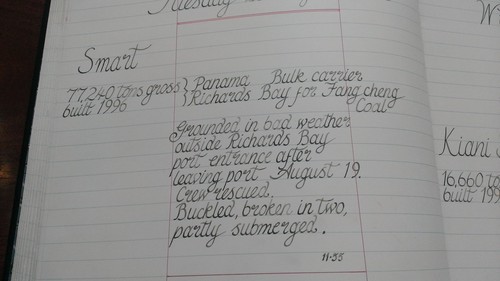

Leave a Reply
You must be logged in to post a comment.